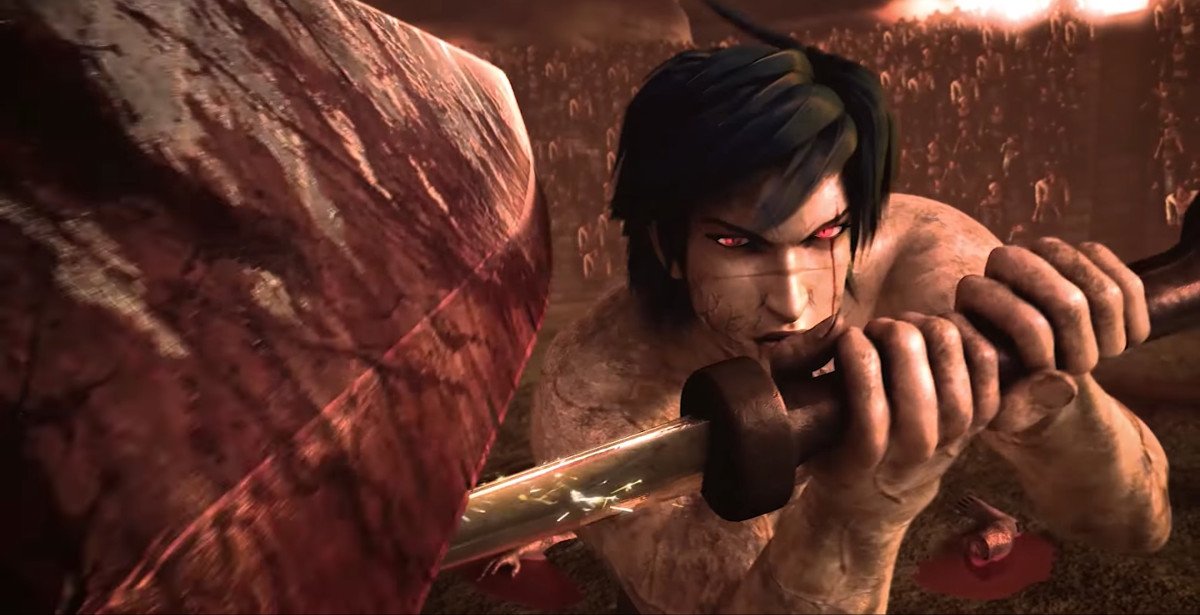Familiar but dated
Nostalgia is ridiculously powerful. Particularly in video games, we tend to get swept up in the nostalgia of our youth with experiences that shaped our taste in a genre or our interest in the medium altogether.
Legrand Legacy: Tale of the Fatebounds aims to tug on our nostalgia-filled heartstrings as a role-playing game from a bygone era. Developer Semisoft promised a PlayStation 2-style JRPG and, for better or for worse, it sure does feel like one.

Legrand Legacy: Tale of the Fatebounds (PC, PS4, Switch [reviewed], Xbox One)
Developer: Semisoft
Publisher: Another Indie
Released: January 24, 2018
MSRP: $19.99
Legrand, much like the classic JRPGs of the PS1 and PS2 generations, uses turn-based combat. Anyone who’s played a classic Final Fantasy or Dragon Quest title will feel at home. Before each round begins, you’ll lock in an action for each of your characters and watch them play out. Legrand, however, asks you to remain a little more active while the action unfolds. You’ll be given a spinning dial with a quick button prompt when each character goes to attack. Get the timing right, and you’ll perform a successful action. Mess it up, and fail. It’s really nothing new to the genre as games like Paper Mario have done this sort of thing before, but it does keep you a bit more engaged. And while it isn’t particularly challenging to pull off, getting an experience bonus from having perfect timing is a worthy reward.
Your active party can hold up to three characters, but you can swap members in and out as a bonus action on your turn, making it easy to change formation and exploit enemy weaknesses. Character placement also plays a role in strategy since you can place characters in the front or back row. Standing in the back will protect you from incoming melee attacks, but you’ll only have access to ranged moves, making it the perfect posting for archers or casters.
Combat is never all that challenging as you can examine weaknesses at any point in the conflict and adjust to exploit enemies accordingly. If any monster feels particularly powerful, it’s best to just have the party guard until they’ve charged up their Arcana actions, special ultimate moves similar to Final Fantasy VII‘s Limit Break.

The way item use in combat is handled feels notably dated and frustrating. Items need to be assigned from the bag to four item slots on a per-character basis. Even most original PlayStation RPGs knew that a catch-all item bag was the way to go. Having to make sure each of my six characters was outfitted with a variety of buff and healing items was an annoying chore. As a result, I stopped relying heavily on items a few hours in.
Beyond the basic turn-based combat, Legrand introduces larger-scale army battles after a few hours. It functions as a simple, self-contained strategy game. You move your units like chess pieces along a grid and attempt to either target specific units, clear the board entirely, or gain control of territory depending on the victory conditions. It isn’t a deep system, but it does keep things fresh between the normal combat encounters.
Legrand‘s art combines hand-painted backgrounds with 3D character models. The result is some pretty stunning cityscapes, forests, and deserts that feel at odds with the unremarkable character models.

I encountered more than a few irritating technical issues in my first few hours with the Switch version. Particularly on long play sessions, I had battles freeze up or even randomly crash the game. The autosave system made sure I never lost an insane amount of progress, but I was annoyed all the same.
Our story is your standard fantasy fare. The protagonist, Finn, is a swordsman with amnesia who discovers with the help of a noble girl named Aria that he is one of the Fatebound, a group of legendary heroes destined to save the world from an ancient threat. Along the way, you’ll get pulled into more significant political turmoil and interpersonal drama, but none of the characters are written strongly enough to really get you invested in all this world-building.
Hell, Finn even manages to get himself embroiled in a love triangle despite being about as charming as a piece of driftwood.

Legrand Legacy: Tale of the Fatebounds is what it claims to be: a role-playing game that feels old, for better or for worse. It won’t wow you with storytelling or world-building, but the combat is serviceable, if not remarkably challenging. If you’re a fan of old-school Japanese role-playing games, you’ll find something to enjoy here. Just know that you’re in for a game that, much like it claims to, feels dated.
[This review is based on a retail build of the game provided by the publisher.]





Published: Mar 3, 2019 08:00 am